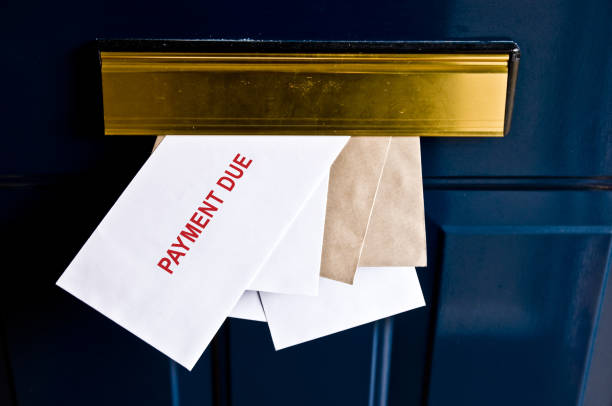 The precarious equilibrium of managing overextended personal debt is a fragile state, entirely dependent on the consistent flow of a steady income. This delicate balance is catastrophically shattered by an income shock—an unexpected and severe disruption in earnings from job loss, a reduction in hours, a medical disability, or the failure of a small business. This event acts not as a mere setback, but as a detonator that exposes the profound vulnerability buried within a leveraged financial life, rapidly triggering a full-blown crisis.The immediate effect is a brutal mathematical shortfall. Where once a budget was strained, there is now an impossible gap between drastically reduced resources and inflexible financial obligations. Minimum payments on credit cards, auto loans, and personal loans suddenly become insurmountable barriers. Essentials like rent and utilities now compete with creditors for scarce dollars. The individual is forced into a series of painful triage decisions, choosing which payments to delay and which relationships to damage, knowing that each missed payment sets in motion a chain of penalties, soaring interest rates, and damage to their credit profile.This financial unraveling is accompanied by a intense psychological toll. The initial anxiety of the income loss itself is quickly eclipsed by the terror of the accelerating debt spiral. The tools that might have offered a buffer—savings, available credit—are often already depleted by the very overextension that defined their pre-shock existence. Feelings of shame and failure can paralyze proactive communication with lenders, allowing the situation to worsen daily. The pressure to find immediate new income sources becomes overwhelming, yet the need to address the growing financial chaos creates a debilitating distraction.An income shock reveals the true nature of overextended debt: it is a risk that is only sustainable in perfect conditions. Without a safety net, the household has no resilience to absorb any economic blow. The path forward requires emergency measures: urgently seeking hardship programs from creditors, exploring all avenues of public assistance, and making drastic reductions in living expenses. Ultimately, recovering from this collision of debt and disaster is a long process of stabilization, one that underscores the critical lesson that true financial security lies not in the ability to manage large payments, but in building the resilience to survive when the income they depend upon suddenly disappears.
The precarious equilibrium of managing overextended personal debt is a fragile state, entirely dependent on the consistent flow of a steady income. This delicate balance is catastrophically shattered by an income shock—an unexpected and severe disruption in earnings from job loss, a reduction in hours, a medical disability, or the failure of a small business. This event acts not as a mere setback, but as a detonator that exposes the profound vulnerability buried within a leveraged financial life, rapidly triggering a full-blown crisis.The immediate effect is a brutal mathematical shortfall. Where once a budget was strained, there is now an impossible gap between drastically reduced resources and inflexible financial obligations. Minimum payments on credit cards, auto loans, and personal loans suddenly become insurmountable barriers. Essentials like rent and utilities now compete with creditors for scarce dollars. The individual is forced into a series of painful triage decisions, choosing which payments to delay and which relationships to damage, knowing that each missed payment sets in motion a chain of penalties, soaring interest rates, and damage to their credit profile.This financial unraveling is accompanied by a intense psychological toll. The initial anxiety of the income loss itself is quickly eclipsed by the terror of the accelerating debt spiral. The tools that might have offered a buffer—savings, available credit—are often already depleted by the very overextension that defined their pre-shock existence. Feelings of shame and failure can paralyze proactive communication with lenders, allowing the situation to worsen daily. The pressure to find immediate new income sources becomes overwhelming, yet the need to address the growing financial chaos creates a debilitating distraction.An income shock reveals the true nature of overextended debt: it is a risk that is only sustainable in perfect conditions. Without a safety net, the household has no resilience to absorb any economic blow. The path forward requires emergency measures: urgently seeking hardship programs from creditors, exploring all avenues of public assistance, and making drastic reductions in living expenses. Ultimately, recovering from this collision of debt and disaster is a long process of stabilization, one that underscores the critical lesson that true financial security lies not in the ability to manage large payments, but in building the resilience to survive when the income they depend upon suddenly disappears.
The long-term consequence is that money that should be going toward retirement savings, college funds, or building an emergency fund is instead diverted to pay high interest on past childcare costs, creating a future financial hole.
Regular monitoring provides a complete picture of your obligations, helps you track progress as balances decrease, and, most importantly, allows you to quickly spot errors or signs of identity theft that could be further damaging your score and your ability to recover.
Providers may allow you to pay bills in monthly installments interest-free. This can make large debts manageable but requires timely payments to avoid default or collections.
While less common than with other debts, providers or collection agencies can sue for unpaid bills, potentially resulting in wage garnishment or bank levies.
Every debt payment has a dual effect: it reduces your liabilities (the debt balance) and, because you use cash (an asset) to make the payment, it reduces your assets by an equal amount. Therefore, the act of paying debt itself is net worth neutral.